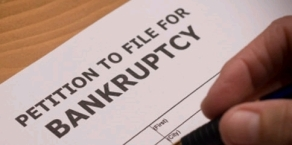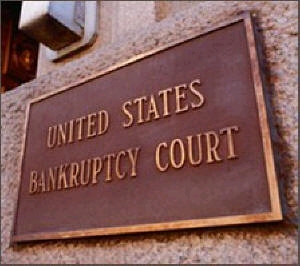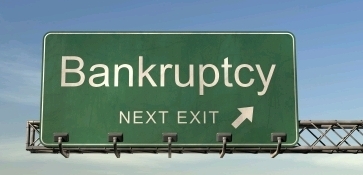Asbestos Bankruptcy Trusts: The Good the Bad and the Ugly

Since the early 1980’s, companies responsible for inflicting asbestos-related illness on hundreds of thousands of Americans have sought to limit or escape legal liability through filing for Chapter 11 bankruptcy protection.
By filing Chapter 11, a company is given immediate immunity from lawsuits filed by the victims of its asbestos products. The company is then given many years to satisfy a number of legal requirements while the victims, many of whom do not have the luxury of time, are forced to wait. Upon meeting the requirements, the company is granted permanent immunity from lawsuits filed by all past and future victims, and is able to emerge from bankruptcy and continue doing business as usual.
The one consolation to asbestos illness victims is the requirement that the company pool assets and insurance proceeds and place them in a trust to compensate past and future victims. The trust establishes guidelines dictating the amount of compensation to be paid to claimants based primarily on severity of illness. While it is not necessary for victims to appear in court or provide testimony, the amount received from the trust is often far less than what would have been received if the company could be sued in a lawsuit.
Despite their many shortcomings, asbestos bankruptcy trusts are becoming an increasingly important component of the compensation available to victims of asbestos disease. This is due to a continuing decrease in the number of viable companies that can be sued in court and a continuing increase in the number of companies filing Chapter 11 bankruptcy.
In 2010, almost 25 years since the first asbestos bankruptcy trust was formed, there are 44 trusts actively paying claims, and nine proposed trusts which are expected to start paying claims in the near future. The combined assets of these trusts are believed to be in excess of $20 billion. The significance of this amount is understood when considering that, from the time the first asbestos bankruptcy trust was formed in 1986 through 2008, the total claims paid by all trusts was approximately $11 billion.
Given the increasing importance of asbestos bankruptcy claims to an asbestos injury victim’s overall recovery, it is crucial that the victim’s attorney be experienced in navigating the myriad of administrative requirements for each of the active trusts. The Worthington Law Office has been helping its asbestos cancer clients receive compensation from asbestos bankruptcy trusts for nearly 20 years. Our clients’ recoveries from the trusts are frequently among the highest in the country.
In order to aid in the understanding of how asbestos bankruptcy trusts came to exist, how trust claims are processed and the current status and future outlook of these trusts, we are providing this guide to asbestos bankruptcy trusts. If you have any questions, or would like to learn more, please contact us at info@rgwpc.com or 1-800-931-9399.
| ||||||||||||||||||||||||||||||||||||||||||
What Are Asbestos Bankruptcy Trusts and How Did They Get Here?
“Gimme Shelter or Else I’m Gonna Fade Away”
Since the 1930’s, many asbestos product manufacturers and suppliers knew about the serious health risks of asbestos. With demand for asbestos products escalating during the 1940’s, 1950’s and 1960’s, companies placed their economic interests ahead of public health by simply ignoring the risks and focusing instead on satisfying the demand for their products. By this time, millions of Americans had been exposed to the dangerous fibers in their homes, schools, workplaces and vehicles.

By the mid to late 1960’s, with incidence of asbestos-related illness on the rise, the first personal injury/product liability lawsuits began being filed against asbestos companies. The first verdict in favor of an injured worker against an asbestos company was entered in 1971. With this determination of legal responsibility on the part of asbestos companies, thousands of new lawsuits were filed.
In the wake of these lawsuits, many asbestos companies found their liabilities growing at a dramatic rate with no end in sight. Many of these companies sought protection by filing for Chapter 11 bankruptcy. Unlike Chapter 7 bankruptcies where the business is shut down and all assets are sold, Chapter 11 bankruptcies allow the company to continue operations while paying creditors over an extended period of time.
Johns Manville Leads the Way
One of the first asbestos companies to file for Chapter 11 bankruptcy was Johns Manville Corporation which, at the time, was the largest producer of asbestos-containing products. Johns-Manville filed Chapter 11 in 1982. Six years later, it emerged from bankruptcy, having shifted its asbestos liabilities to a new entity called the Manville Personal Injury Settlement Trust.
The Manville Trust planned to pay claimants 100% of the settlement value of their claims (or the same value a claimant would have received if Johns Manville was sued in court). It was anticipated that no more than 100,000 claims would be submitted. However, by 1992, nearly 200,000 claims had been submitted and the trust was insolvent only four years after it was formed.
In 1995, the Manville Trust was restructured via a settlement. Through the settlement, a number of significant changes were made regarding the operation of the trust. First, a new compensation plan was established giving priority to persons with the most serious illnesses (i.e. mesothelioma and lung cancer). Second, procedures were established for resolving disputes between claimants and the trust without resorting to the courts. Third, an administrative role was created for a “future claimant’s representative” to ensure that trust assets were handled in such a way that future claimants’ rights would be preserved.
New Rules Based on the Revised Manville Trust
In 1994, Congress amended the Bankruptcy Code to require many of the revisions which were part of the Manville Trust settlement. Under existing law, once a company files for Chapter 11 bankruptcy protection, it is immediately entitled to a ban on all personal injury lawsuits. The company is then required to propose a bankruptcy plan, including the details of a trust, which satisfies the requirements of sections 1129 and 524(g) of the Bankruptcy Code. This can be a lengthy process which involves negotiations by representatives of various groups that will be affected by the trust. Once a plan is reached, it must then be certified by the bankruptcy court and thereafter approved by a Federal District Court.
Once all of this is accomplished, which can take anywhere from one to more than ten years, the temporary ban on lawsuits becomes permanent and the newly reorganized company is able to emerge from bankruptcy. The company’s bankruptcy trust then begins accepting, reviewing and paying qualified claims of asbestos injury victims. Trust personnel monitor the status of the trust and make adjustments, such as reducing the percentage of claim values paid to claimants, designed to ensure that funds will be available to compensate future victims.
Asbestos Bankruptcy Trusts as of 2010
Who’s Left?
According to a report issued by the RAND Corporation in August 2010, since 1982, a total of 96 companies have filed for Chapter 11 bankruptcy protection in which asbestos tort liabilities are addressed. After an uptick in the 1980’s, the number of bankruptcies filed remained modest in the 1990’s. The bankruptcies surged in the first part of the 2000’s, peaking at 15 in 2002.
Of the 96 companies which filed for Chapter 11 protection, a total of 54 bankruptcy trusts were established. Ten of the trusts are no longer active, having stopped paying claims for lack of assets or other reasons.
Forty four trusts are currently active or still paying claims. These trusts, and the date of formation, are listed below. However, of these 44 active trusts, it is estimated that 26 of the trusts account for 99% of total claim payments through 2008.
| I. Active Trusts | |
| Trust Name | Year Established |
| A&I Corporation Bodily Injury Trust | 2005 |
| A-Best Asbestos Settlement Trust | 2004 |
| AC&S Asbestos Settlement Trust | 2008 |
| API, Inc. Asbestos Settlement Trust | 2006 |
| Armstrong Word Industries Asbestos Personal Injury Settlement Trust | 2006 |
| ARTRA 524(g) Asbestos Trust | 2007 |
| ASARCO LLC Asbestos Personal Injury Settlement Trust | 2009 |
| Babcock and Wilcox Company Asbestos Personal Injury Settlement Trust | 2006 |
| Bartells Asbestos Settlement Trust | 2001 |
| Brauer 524(g) Asbestos Trust | 2007 |
| Burns and Roe Asbestos Personal Injury Settlement Trust | 2009 |
| C.E. Thurston and Sons Asbestos Trust | 2006 |
| Celotex Asbestos Settlement Trust | 1997 |
| Combustion Engineering 524(g) Asbestos Personal Injury Trust | 2006 |
| DII Industries, LLC Asbestos Personal Injury Trust | 2005 |
| Eagle-Picher Industries Personal Injury Settlement Trust | 1996 |
| Federal Mogul U.S. Asbestos Personal Injury Trust, Fel-Pro Subfund | 2007 |
| Federal Mogul U.S. Asbestos Personal Injury Trust, FMP Subfund | 2007 |
| Federal Mogul U.S. Asbestos Personal Injury Trust, T&N Subfund | 2007 |
| Federal Mogul U.S. Asbestos Personal Injury Trust, Vellumoid Subfund | 2007 |
| G-1 Asbestos Settlement Trust | 2009 |
| H.K. Porter Asbestos Trust | 1998 |
| J.T. Thorpe Company Successor Trust | 2004 |
| J.T. Thorpe Company Settlement Trust | 2006 |
| Kaiser Asbestos Personal Injury Trust | 2006 |
| Keene Creditors Trust | 1996 |
| Lummus 524(g) Asbestos Personal Injury Trust | 2006 |
| Lykes Tort Claim Trust | 1997 |
| Manville Personal Injury Settlement Trust | 1988 |
| NGC Bodily Injury Trust | 1993 |
| Owens Corning Fibreboard Asbestos Personal Injury Trust, Fibreboard Subfund | 2006 |
| Owens Corning Fibreboard Asbestos Personal Injury Trust, Owens Corning Subfund | 2006 |
| Plibrico Asbestos Trust | 2006 |
| Porter Hayden Bodily Injury Trust | 2006 |
| Raytech Corporation Asbestos Personal Injury Settlement Trust | 2000 |
| Shook and Fletcher Asbestos Settlement Trust | 2002 |
| Stone and Webster Asbestos Trust | 2004 |
| Swan Asbestos and Silica Settlement Trust | 2003 |
| T.H. Agriculture and Nutrition, LLC Industries Asbestos Personal Injury Trust | 2009 |
| United States Gypsum Asbestos Personal Injury Settlement Trust | 2006 |
| United States Mineral Products Company Asbestos Personal Injury Settlement Trust | 2005 |
| UNR Asbestos-Disease Claims Trust | 1990 |
| Utex Industries, Inc. Successor Trust | 2004 |
| Western Asbestos Settlement Trust | 2004 |
Who’s Next?
As of August 2010, there were nine additional trusts which had been proposed but are at various stages in the confirmation process. It often takes many years from the time a company files bankruptcy until the trust is confirmed and begins accepting claims. According to the RAND report, the average time from filing to confirmation is 3.9 years. However, this average is likely to increase due to the fact that, of the 9 companies with proposed trusts pending, one has been in bankruptcy for over ten years, two over nine years, and another two for over six years. The nine pending trusts are listed below.
There are also at least seven additional companies that filed Chapter 11 bankruptcy from October 2008 through July 2010 which are expected to propose new trusts in the coming years.
What’s Left? According to the RAND report, the initial assets of all of the 54 trusts that were either formed or proposed from 1986 through 2010 are approximately $44 billion. Through 2008, the total amount of claims paid to asbestos injury claimants was approximately $11 billion. When accounting for additional claims made though 2010, administrative expenses incurred by the trusts and trusts which have not reported claims payment information, it is estimated that the current combined assets of all of the existing and proposed asbestos bankruptcy trusts still exceed $20 billion. This amount is expected to rise as assets are added to the current and future proposed trusts.
As indicated above, one of the ways in which trusts seek to ensure that funds are available for future claimants is to reduce the percentage of the claim value which is paid to the claimant. For many trusts formed in the 1980’s and 1990’s, the amount of funding believed to be sufficient to compensate victims turned out to be woefully insufficient, as the number of asbestos disease victims proved to be far more than anticipated. As a result, the payment percentages for many of these trusts have been lowered on many occasions. According to the 2010 RAND report, the payment percentages run from a low of 1.1% for the Unarco Trust, to a high of 100% for the newly-formed THAN trust. The median payment percentages for the 29 trusts which were reviewed was 25%, with a sizeable group of trusts with payment percentages less than 25% and another sizeable group with payment percentages of 40% to 60%. How Does the Asbestos Bankruptcy Claims Process Work?Determining Which Claims to Submit The first stage of submitting bankruptcy trust claims involves identifying the trust or trusts in which to submit a claim. A person’s work history—the places and products he or she worked with or around--determines the trusts to which a claim may be submitted. A claimant can only recover from a trust if he or she was exposed to asbestos that was produced, supplied or used by the trust’s debtor company. For example, a person who worked with products manufactured by Johns-Manville could file a single claim with the Manville Trust. However, a person who used products made by Johns-Manville, Kaiser, U.S. Gypsum and J. T. Thorpe, could file with each of these company’s trusts. There is no limit on the number of trusts to which a person may submit claims; nor is there a monetary cap or limit to the amount a person can from asbestos bankruptcy trusts. Furthermore, recovery of funds from asbestos bankruptcy trusts does not prevent claimants from recovering funds from solvent companies through a lawsuit. Many persons who submit claims to asbestos bankruptcy trusts are also parties to civil personal injury lawsuits. Each trust has separate exposure requirements which must be met in order to qualify for compensation. Asbestos attorneys with experience in submitting asbestos bankruptcy claims can quickly determine whether a person will qualify for compensation from any of the 44 active bankruptcy trusts. Determining the Level of Review for Each Claim Next, a determination must be made regarding the method or level of review to be sought with respect to each trust in which a claim will be submitted. Almost all trusts have two main methods of review: expedited review and individual review. With some exceptions, a claimant may choose to proceed under either method. The expedited review process is designed to pay claims quickly at a fixed value. Different diseases (such as mesothelioma and asbestosis) are valued differently, with the more-severe diseases valued more highly. The payment amount, known as the scheduled value, is published by the trust and known in advance. In order to qualify for the quick, fixed payment available through expedited review, the claimant must meet a set of criteria for medical evidence and work history published by the trust. Claims supported by documentation meeting these criteria are presumed by the trust to be valid. The alternative individual review process gives claimants with certain diseases the opportunity to receive individual consideration of their specific medical condition and work history in hopes of justifying an assigned value in excess of the scheduled value available through expedited review. In addition, individual review is mandatory in cases where the claimant cannot meet the medical or exposure criteria required for expedited review as well as for certain medical conditions such as lung cancer in a claimant who was a smoker. Under individual review, there are no presumptively valid claims. Because individual circumstances are taken into account, individual review claims typically require additional medical and work history evidence and take longer to process than expedited review claims. Individual review claims do not have a scheduled value. The trust’s claims processing facility determines the liquidated value, or payment amount, based on the individual circumstances. The assigned value may or may not be greater than the scheduled value for a similar disease. What Medical and Exposure Evidence Must be Produced? Asbestos exposure has been linked to a variety of diseases. The Bankruptcy Code mandates that asbestos bankruptcy trusts equitably compensate claimants with similar diseases. To do this, trusts have established disease levels, or categories of asbestos-related disease. The trusts generally recognize eight disease levels. The most severe of the disease levels is mesothelioma and the least severe is asbestosis or pleural disease without significantly restricted pulmonary function.
For each disease level, there is a separate set of medical and exposure criteria. For mesothelioma, the typical medical requirements are diagnosis by a pathology report from a board certified pathologist or a pathology report from a hospital accredited by the Joint Commission. The criteria for non-mesothelioma lung cancer as well as non-malignant conditions are much more extensive, requiring such proof as a pulmonary function test with specified findings, medical documentation establishing asbestos as a contributing factor of the disease or a physician’s statement that at least ten years have elapsed between exposure to asbestos and diagnosis. Evidence of an asbestos-related disease alone is not sufficient to entitle a claimant to compensation. Trusts also require credible evidence that the claimant worked with or around asbestos at the company’s facilities or worked with or around the company’s products during the time when they contained asbestos. This evidence may provided in the form of a written statement from the claimant or a witness confirming that the claimant worked at a site or sites where the trust acknowledges that the company’s asbestos products were used. Many trusts publish a list of confirmed exposure sites which a claimant can review and determine if he or she ever worked there during the relevant time. Other exposure evidence may consist of an affidavit, employment records, invoices or other business documents, or other evidence that the trust deems reliable. Certain disease levels may carry a higher standard for exposure criteria. Trusts do not require a claimant or witness to appear personally or face questioning from trust personnel. In addition, trusts do not require specific evidence about the amount of asbestos dust that the claimant inhaled while working with the company’s products. Accordingly, the level of evidence necessary to receive compensation from trusts is often much less than what would be required if the claims were being presented in a personal injury lawsuit. The ability to recover compensation (albeit typically in a lesser amount) without the time, expense and personal involvement which is required in a lawsuit, are the primary advantages which bankruptcy trust claims offer to claimants. How is the Claim Value Determined? Once the trust determines that a claim is valid, through either expedited or individual review, the claim must be liquidated, or assigned a monetary value. Liquidating a claim is treated differently under expedited and individual review. For expedited review, claims are liquidated according to the scheduled value published by the trust for the claimant’s specific disease level. It is a one-size-fits-all amount, as specific aspects of a claimant’s work history or medical situation are not used to tailor an award beyond classification by disease level. Trusts set the scheduled value at a level to encourage most claimants to choose expedited rather than individual review. Because individual circumstances can vary greatly, the scheduled value may or may not be significantly less than the amount a claimant would receive under individual review. Individual review claims are assigned a value on a case by case basis based on factors including, among others, age, disability, number of dependents, noneconomic damages, and the settlement and verdict history of the claimant’s law firm. Trusts seek to assign a value to an individual review claim which resembles the amount which historically would have been awarded if the claim had been asserted in a lawsuit. Regardless of individual circumstances, however, the value assigned to the claim may not exceed the maximum value, or upper monetary limit, published by the trust. How Much is Paid to the Claimant? As explained above, most trusts do not have sufficient assets to pay the full amount of the claim value. This is the case whether it is the scheduled value for an expedited review claim or an assigned value for an independent review claim. Ever since the reorganization of the Manville Trust, asbestos bankruptcy trusts have wrestled with the question of how to pay future claims out of the limited trust assets. If predictions regarding the number of future claims are too low, a trust runs the risk of insolvency (as was the case with the Manville Trust). To manage this problem, the trusts establish a system of pro rata discounts to the value of a claim offered to a current claimant. This pro rata share is known as the payment percentage. The payment percentage is the percentage of either the scheduled value or assigned value which is actually paid to the claimant. For example, if the claim value (either scheduled or assigned) is $100,000 and the trust’s payment percentage is 20%, the payment to the claimant would be $20,000. As discussed above, the payment percentage varies a great deal across trusts and can change over time. For example, in 1995 the Manville Trust, which initially paid 100% of claim values, slashed its payment percentage to 10%. In 2001, as larger-than-expected claims volume continued to tax trust assets, the payment percentage was dropped to 5%. More recently, the Manville Trust increased the payment percentage to 7.5%. Do I Qualify for Compensation From Asbestos Bankruptcy Trusts? Asbestos bankruptcy claims may be asserted by living victims of mesothelioma or other forms of asbestos-related disease. Claims may also be asserted by the living heirs of deceased victims of asbestos disease. Even if a number of years have passed since diagnosis or death, it may still be possible to submit claims. This is true even if the statute of limitations for filing a lawsuit has expired. The asbestos lawyers at the Worthington Law Firm can quickly determine whether you are eligible to assert claims with any of the currently active trusts as well as any of the trusts which are expected to begin accepting claims in the coming years. To find out if you qualify, or to learn more about asbestos bankruptcy trusts, contact us at info@mesothel.com or 800-831-9399. Asbestos Bankruptcy Trust Update for October 22, 2010Leslie Controls on the Fast Track to having its “Pre-Packaged” Bankruptcy Plan Approved Could Begin Paying Claims by Early 2011 Leslie Controls, Inc., a wholly-owned subsidiary of CICOR International, Inc., filed for Chapter 11 bankruptcy protection in July 2010 citing overwhelming liabilities for current and future asbestos injury claims. Since the early 1900’s, Leslie was a major manufacturer of industrial water heaters and steam control systems. Leslie was a large supplier of valves and other steam equipment to the United States Navy during World War I and World War II. Leslie’s products, which were often equipped with asbestos gaskets, insulation and packing, were responsible for exposing thousands of Americans to harmful asbestos fibers. | |||||||||||||||||||||||||||||||||||||||||



